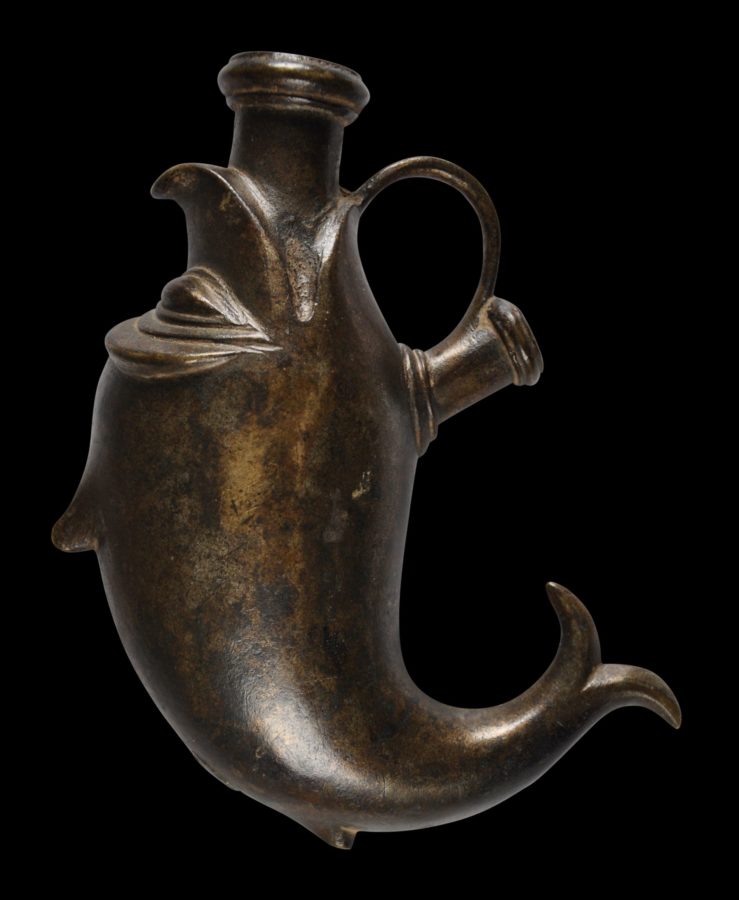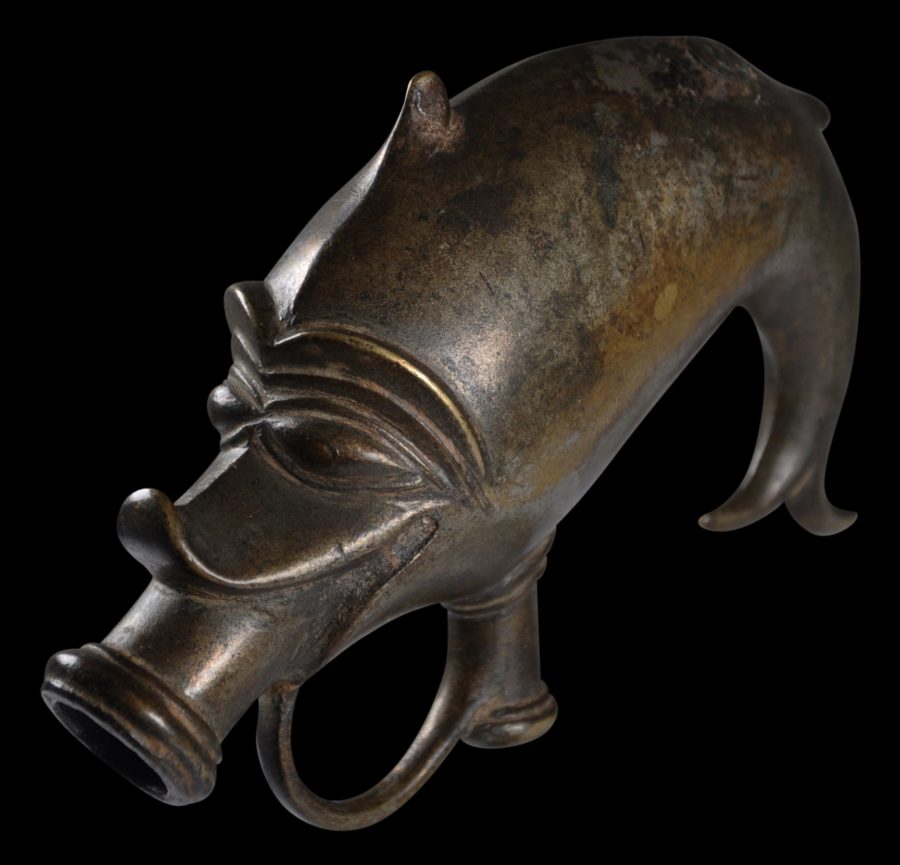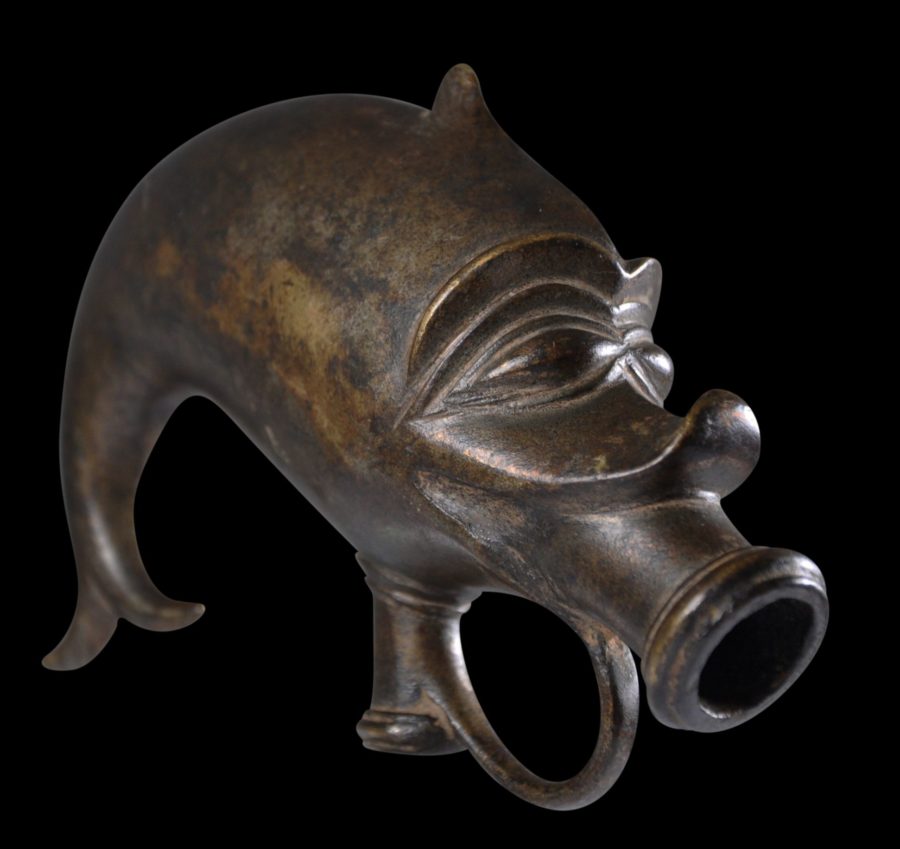Enquiry about object: 6439
Portable Brass Indian Fish-Shaped Hookah Base
North India 18th-19th century
length: 14.5cm, weight: 392g
Provenance
UK art market
This northern Indian hookah base rather whimsically is in the form of a fish and possibly a dolphin. The fish emits the opening for the main hookah pipe from its fleshy lips in such a way that it appears to have a quizzical smile on its face. Altogether, the casting is quite comical and undoubtedly unusual. It is possible that the fish form represents Matsya, the fish avatar of Vishnu.
The base was for smoking tobacco and would have held water. It would have been attached to a small charcoal brazier burner and various pipes, including one that would have lead to a mouthpiece and the mouth.
The base is designed to be held in the palm of the hand so that the owner could continue to enjoy smoking as he or she moved around.
Smaller Indian hookah bases like this sometimes are encountered in the form of a mango, but relatively few have an animal form.
A hookah base in the form of a dolphin is in the Nasser Khalili collection and illustrated in Rogers (2007, p. 238). The Khalili example is attributed to the seventeenth century.
The example here is in fine condition with a lovely, chocolate-brown patina from use and age.
References
Rogers, J.M., The Arts of Islam: Treasures from the Nasser D. Khalili Collection, Art Gallery of New South Wales, 2007.




